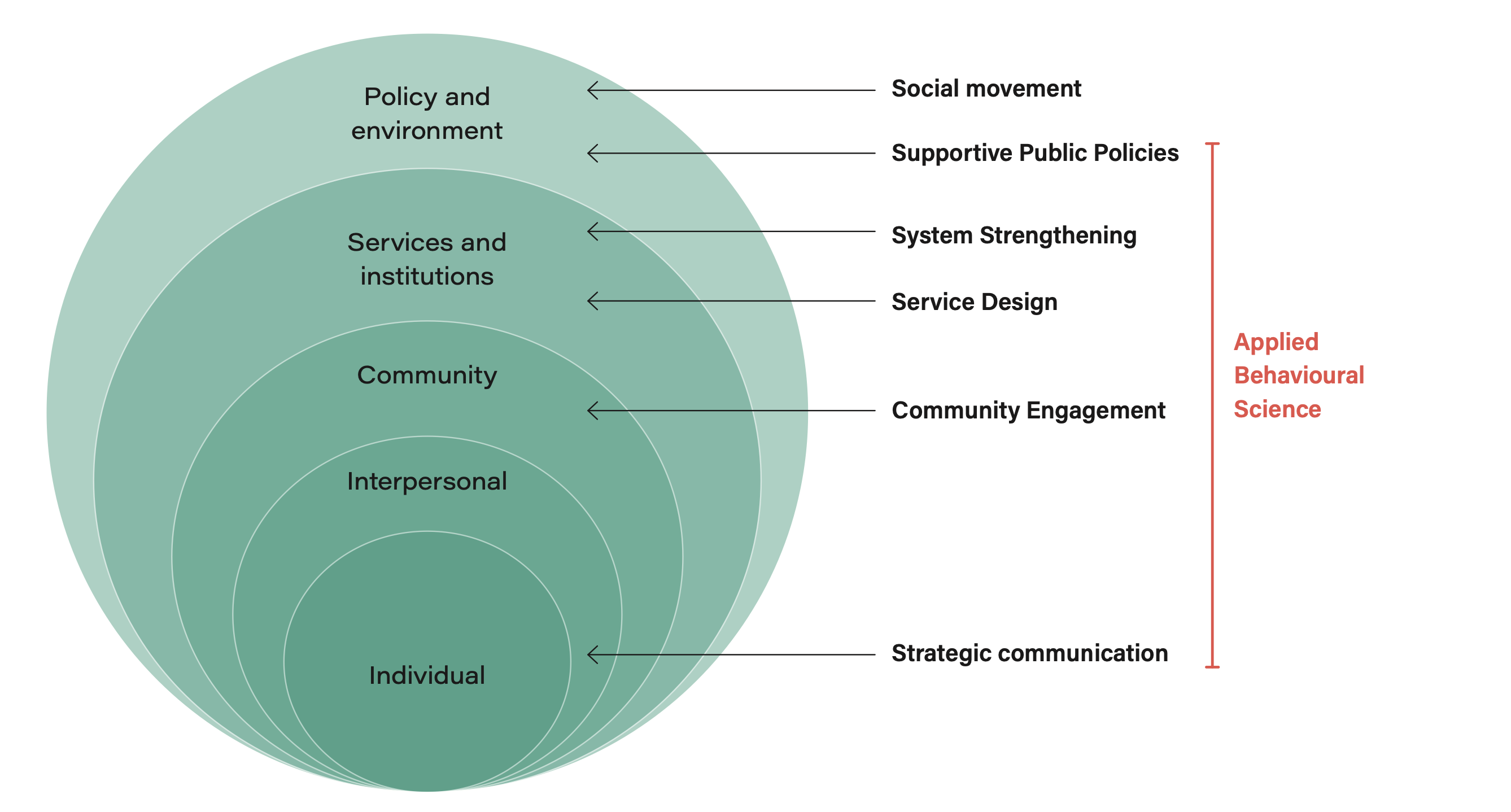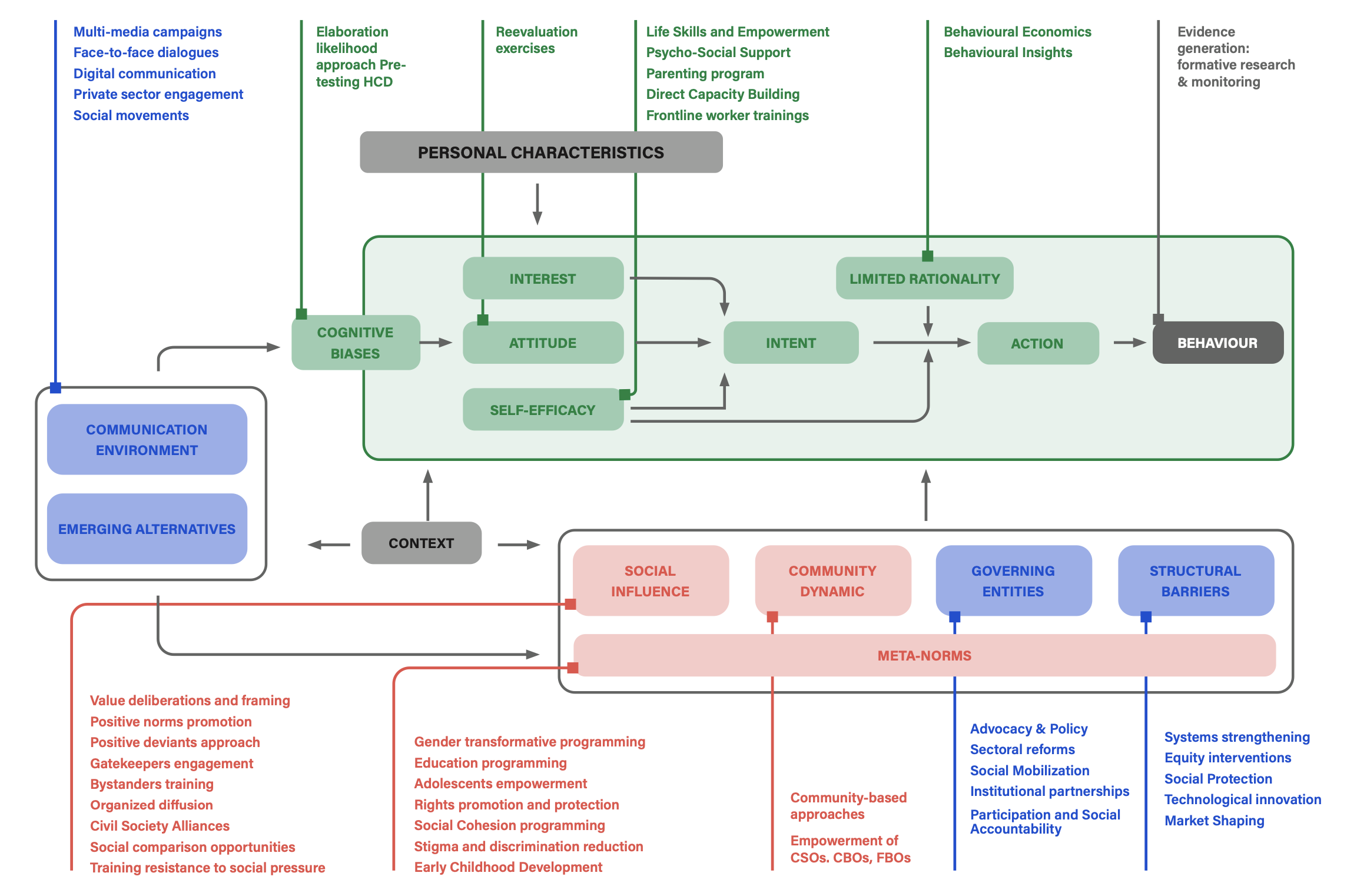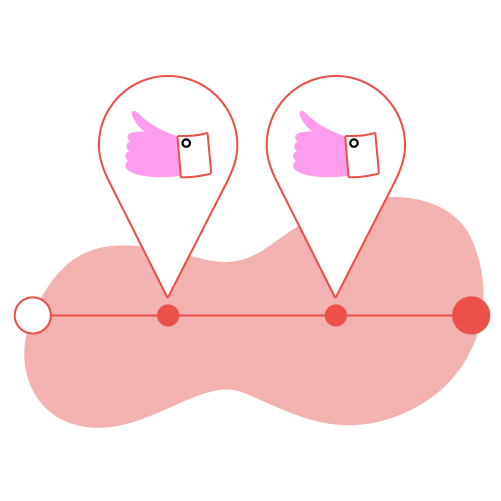
Selecting SBC Approaches
How to ground your decisions in local evidence
Introduction

Once you have diagnosed your situation, you are ready to select SBC Approaches.
This process will help to ground investments and other decision-making in relevant evidence and local insights.
The importance of using multiple approaches
At this point, you should have a deep understanding of the situation, its challenges and opportunities. You should know the key groups (most affected, most likely to help, gatekeepers and influencers) and even have some ideas around how to initiate and support a change process. Now is the time to convert your knowledge into an action plan.
Your analysis likely revealed a need for multiple Social and Behaviour Change (SBC) Approaches. Improving gender equality, community resilience and social cohesion all require multi-sectoral, long-term programmes and social movements. Even changing individual behaviour requires significant shifts in the social and cultural contexts in which people live. While shading information and raising awareness is often necessary, it is only a starting point.
What are UNICEF’s 7 core SBC Approaches?
SBC has a wide range of methods, tools and disciplines to draw from. These can be categorized and named in many different ways. For the sake of this Programme Guidance they have been divided into the following seven categories.
1. Social and Behaviour Change Communication: Designing holistic and data-driven communications to enable change
2. Community Engagement: Partnering with communities so they can lead the change process
3. Service Improvements: Designing services that are accessible, usable and valuable
4. Systems Strengthening: Strengthening sectoral systems to achieve SBC objectives
5. Supportive Public Policies: Changing the rules to enable positive change
6. Social movements: Supporting and nurturing social change processes
7. Applied Behavioural Science: Shaping contexts and designing processes and products to enable behaviour change
Selecting the right mix of SBC Approaches
There is no standard set of approaches that can be applied to any context and challenge. Your combination of approaches will depend on your priority populations and their context. Comprehensive SBC strategies often aim to address numerous reinforcing behaviours, as well as the structures and networks that drive these behaviours and affect an individual’s well-being.
For example, an SBC strategy focused on education may employ a number of approaches to improve school attendance among adolescent girls. Approaches may include changing laws, introducing financial incentives through social protection mechanisms, adapting pedagogical strategies among teachers and increasing the number of female teachers. It may also include efforts to address community norms around the rights of girls and women, as well as the perception and reproduction of gender roles in families.
Your problem and opportunity statements will guide you towards the right mix and blend of approaches.
We use the socio-ecological model (SEM) to represent the 7 main approaches, simplifying and approximating what these strategies generally aim to influence, and with whom they are intended to be conducted or applied. The following map of approaches can guide strategy selection and link formative research with strategy design.

The socio-ecological model is powerful because it places individual behaviour within the larger context. For example, if we want to increase birth registration and breastfeeding among new mothers, the model can help to identify the range of conscious and unconscious individual factors we need to address (e.g., knowledge, beliefs, perceptions and attitudes) and how we can create an environment that enables change (e.g., family dynamics, parenting roles, social norms, access to services, rules and regulations).
A model like the SEM can help you arrive at a set of approaches that strive for sustainable change through action and collaboration across multiple levels.
Selecting interventions
The Behavioural Drivers Model (BDM) can also guide programme design and intervention selection. The BDM, like the SEM, looks at mechanisms operating at several levels. However, this model also focuses on behavioural pathways and how a wide range of drivers influence behaviour. This creates a map that we can use to think through particular actions and activities, as well as appropriate stakeholders to involve in a change effort.
The figure below is an intervention map. It links and translates formative research results into interventions, by identifying techniques specifically designed to address a factor of interest.
Like the SEM, this map is a simplification. Certain interventions address multiple drivers. For example, parenting programmes can influence not only caregivers’ self-efficacy, but also their attitudes and the norms within a community. Certain drivers might also change indirectly as a result of other factors, such as social norms shifting due to structural changes. However, it remains a very helpful tool for thinking through what needs to be done on the basis of the formative research.
Relationship between the main drivers, behavioural interventions and programming approaches

The variety of potential behavioural drivers demonstrates how a single behaviour may be supported by a broad array of motives. Some motives may relate directly to the individual decision-maker, while others may be due to groups the individual finds themselves in or result from their larger environment.
For any given behaviour, certain drivers will matter more than others. To develop interventions, it is critical to identify significant drivers and understand how they relate to each other and which are likely to change. In most cases, resources will be limited. Policy makers and programme designers should select the most influential drivers on which to intervene based on financial and practical feasibility.
How do we select the results to be achieved? Read on to find out.

Create - Selecting SBC Approaches
Download this article as a PDF
You can download the entire page as a PDF here





